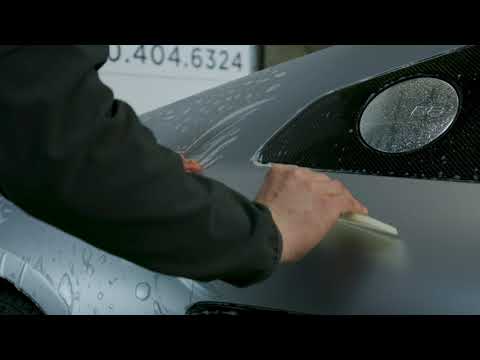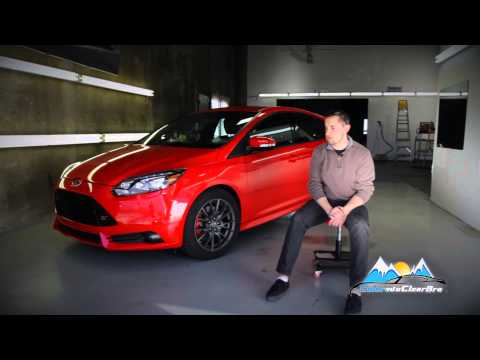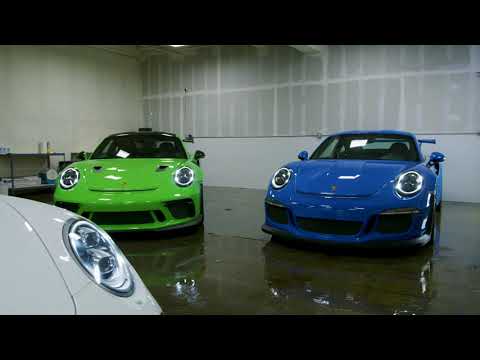On average, drivers require paint touch-ups every two years due to chips and scratches. But thanks to advanced self-healing technology, there's a new way to keep your vehicle safe. Automotive self-healing film is an excellent innovation in vehicle surface protection. It keeps your car's look safe from daily damage.
Did you know the market for automotive films is expected to hit $6 billion by 2025? This increase is driven by top-notch products, such as self-healing paint protection film (PPF). They offer cars the best protection. This advanced film not only protects your car from scratches but also fixes itself to keep your vehicle looking great all the time.
Keeping your vehicle looking good is key, and self-healing PPF is a wise choice for its beauty and value. This film is more than a protective layer. It's a smart shield that can fix scratches on its own. It represents a step towards the future of car care.
Learn more about How Long Does Self-Healing Paint Protection Film Last?
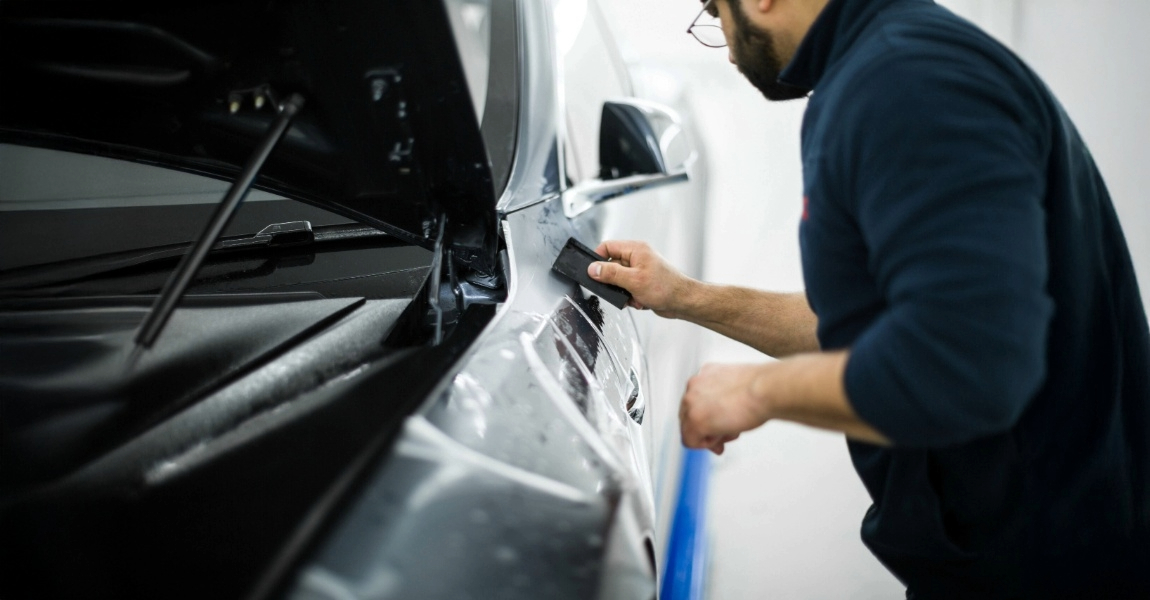
Table of Contents - Self-Healing PPF
- What Is Self-Healing PPF?
- Benefits of Self-Healing PPF for Your Vehicle
- The Mechanism of Self-Healing in Automotive Films
- Installation Process of Self-Healing Car Wrap
- Different Types of Self-Healing Clear Bra Available
- Maintenance Tips for Your Self-Healing PPF
- Comparing Self-Healing PPF With Traditional Vehicle Protection Methods
- Real-Life Applications of Self-Repairing Paint Protection
- The Evolution of Self-Healing Technology in the Automotive Industry
- Choosing the Right Self-Healing PPF for Your Vehicle
- Self-Healing PPF: FAQs Answered
- Conclusion
Key Takeaways - Self-Healing PPF
- Understand the importance of self-healing PPF as a revolutionary approach to preserving your vehicle's appearance.
- Discover how the advanced self-healing technology automatically repairs scratches on your vehicle.
- Explore the significant market growth of automotive self-healing films, which highlights their effectiveness and increasing popularity among car owners.
- Recognize self-healing PPF as an investment in maintaining the market value and beauty of your vehicle for years to come.
- Explore the balance between immediate surface defense and long-term aesthetic maintenance with self-healing paint protection film.
What Is Self-Healing PPF?
Self-healing Paint Protection Film (PPF) represents a significant advancement in car care. It's a self-repairing protective layer that keeps your car's surface safe from scratches, stains, and daily wear and tear. With this top-notch self-healing technology, your car not only maintains its appearance but also lasts longer.
So, what is paint protection film, or PPF? It’s a slim layer of polyurethane or polymer that covers your car’s paint. Its job is to protect the paint from damage by road debris, minor scratches, and environmental factors. This keeps your car looking good and maintains its value.
Now, let's get into the details of how this technology works.
Understanding Paint Protection Film
The concept of paint protection film has undergone significant evolution since its introduction. It was first designed for helicopter blades to prevent them from being damaged by debris. Now, this technology is further enhanced for cars, becoming tougher and able to repair light scratches on its own.
The Science Behind Self-Healing Technology
The magic behind self-repairing PPF is thermal-responsive polymers. When these polymers are heated by the sun, the car's engine, or warm water, they revert to their original shape. This fixes any minor damage.
Here is a table that compares regular PPF to self-healing PPF. It helps you see their differences and why self-healing PPF is beneficial:
| Feature | Traditional PPF | Self-Healing PPF |
|---|---|---|
| Durability | High | Very High |
| Healing Properties | None | Thermal-induced healing |
| Longevity | 5-7 years | 10+ years |
| Cost | Lower | Higher (due to advanced features) |
| Protective Abilities | Stain resistance, scratch protection | Advanced stain resistance, scratch auto-repair |
Choosing self-healing paint protection film is a smart choice for maintaining your vehicle's great shape. With ongoing innovations, these films are setting new benchmarks in car paint protection.
Benefits of Self-Healing PPF for Your Vehicle
Putting self-healing Paint Protection Film (PPF) on your car does more than protect it. It keeps your vehicle looking sharp and reduces maintenance costs over time.
Preserves Your Car's Aesthetic Appeal
One significant benefit of paint protection film is that it keeps your car looking great. This film guards against UV rays, acid rain, and dirt, and can fix itself. Minor scratches and marks disappear, keeping your car looking shiny.
Long-Term Cost Savings on Repairs
Using a self-healing PPF helps save money on car maintenance. It reduces the need for frequent detailing and prevents significant damage from requiring costly paint jobs. It also helps keep your car’s exterior lasting longer and maintain its value. This means saving money on care and future sales.
So, adding self-healing Paint Protection Film to your car care plan offers strong protection and a beautiful look, while also being financially savvy over time. This investment keeps your car in excellent condition. It's all about smart spending for your car's upkeep and visual appeal.
The Mechanism of Self-Healing in Automotive Films
Car films have undergone a significant upgrade, featuring self-healing car wraps. These wraps keep cars looking new by fixing themselves. They rely on heat or chemicals to erase dents and scratches, keeping your car's look fresh.
Thermal-Activated Healing
Thermal-activated healing is a cool part of self-healing wraps. It uses the sun's warmth or man-made heat to initiate the process. If your wrap gets a scratch or dent, heat helps it remember and return to its perfect shape, all by itself.
Chemical-Induced Self-Repairing Capabilities
This healing type uses tiny capsules loaded with a special healing agent. If the wrap gets damaged, these capsules open up. The released substance then mixes with the wrap to mend tears or scratches on its own. This keeps the car looking great, protecting it from daily damage.
Introducing thermal-activated film recovery and chemical self-repairing film to car wraps is a leap forward in car care. These technologies offer owners ease and help maintain the car's value.
Installation Process of Self-Healing Car Wrap
The professional PPF installation process is key for good vehicle paint protection. When experts do it, your car looks great and receives the best protection against environmental damage.
To begin, it is essential to clean the car's surface thoroughly. This removes any dirt that could prevent the paint protection film from adhering correctly. The cleaning process begins with a deep wash, followed by clay barbing to remove fine particles of dirt.
| Step | Description | Importance |
|---|---|---|
| 1. Surface Cleaning | Clean and decontaminate the surface to prepare for film application. | Ensures strong adhesion and flawless finish. |
| 2. Cutting the Film | Custom-cut the film to fit your vehicle’s dimensions precisely. | Prevents gaps and overlaps for optimal protection. |
| 3. Application of Film | Apply the self-healing PPF meticulously to avoid bubbles and wrinkles. | Maximizes the efficiency and visual appeal of the film. |
| 4. Final Inspection | Detailed check to ensure every inch is perfectly aligned and secure. | Guarantees the effectiveness of the protective film. |
Every step in applying the self-healing PPF needs to be done with care and accuracy. This film features advanced technology that automatically heals minor scratches. It keeps your car's outside looking new.
In conclusion, hiring a professional PPF installation service is a wise choice. It makes your car look better and last longer. You also get peace of mind, knowing your car is safe from daily wear and tear.
Different Types of Self-Healing Clear Bra Available
There are many self-healing clear bra options on the market today. Each one is made for different needs and wants. They offer the best protection for your vehicle. It's essential to know the differences between premium self-healing film and standard options. This ensures you choose the best one for your situation.
Premium Self-Healing Film Versus Standard Options
Premium self-healing film uses advanced technology. It not only keeps your vehicle looking good but also lasts longer and repairs itself. Heat from sunlight or warm water can make scratches and swirls disappear. Your car stays looking new for a longer time. Meanwhile, standard options protect against scratches but don’t have the self-healing features that keep your car looking great.
Customization Options for Every Vehicle
PPF customization ensures your vehicle is perfectly protected, fitting every curve and contour. It doesn't matter if you have a small car, an SUV, or a luxury sports car. There are self-healing clear bra options for every model. This type of protection provides comprehensive coverage for your vehicle. It also makes your car look better and last longer.
Here's a table showing the differences between premium and standard PPF. It helps you see what’s best for your vehicle:
| Feature | Premium Self-Healing Film | Standard PPF |
|---|---|---|
| Self-healing Capabilities | Advanced healing of scratches and swirls at the molecular level | Limited to minor abrasions |
| Durability | Highly durable, often with extended warranties | Moderate durability with a shorter lifespan |
| Customization | Highly adaptable to vehicle specifics | Standard sizes and limited flexibility |
| Cost Effectiveness | Higher initial investment but long-term savings | More affordable but frequent replacements are needed |
| Aesthetic Preservation | Enhances and preserves vehicle appearance | Basic protection without added benefits |
Maintenance Tips for Your Self-Healing PPF
To keep your self-healing paint protection film (PPF) working well, follow the right PPF maintenance tips. Taking care of it not only makes your car look better but also makes the PPF last longer. Here, you'll find tips on how to care for self-healing surfaces and ways to prolong PPF life.
Cleaning and Caring for Self-Healing Surfaces
Caring for your PPF properly means cleaning it regularly and handling it with care. Start by gently washing the surface with water and pH-neutral shampoo. This removes dirt without harming the PPF. Don't use rough tools or strong chemicals.
Use a soft microfiber towel or a sponge made for car care instead. Regular cleaning helps prevent buildup, allowing the PPF to heal minor scratches and marks with the application of heat.
How to Prolong the Life of Your Paint Protection Film
To make your PPF last longer, clean it regularly and handle it with care. Also, check it with professionals periodically. Here's what you should do:
- Avoid prolonged exposure to the sun to prevent UV damage to the PPF on your car.
- Every six months, apply a sealant designed explicitly for PPF to maintain its protection and shine.
- Look for any lifting or peeling edges on the film, and have them fixed by a professional.
For more expert advice, here's a table showing what to do and what to avoid to keep your PPF in good shape:
| Common Practice | Recommended Practice |
|---|---|
| Using abrasive cloths for cleaning | Using soft microfiber towels |
| Cleaning with strong solvents | Using pH-neutral car shampoos |
| Ignoring minor peels and nicks | Regular inspections and prompt repairs |
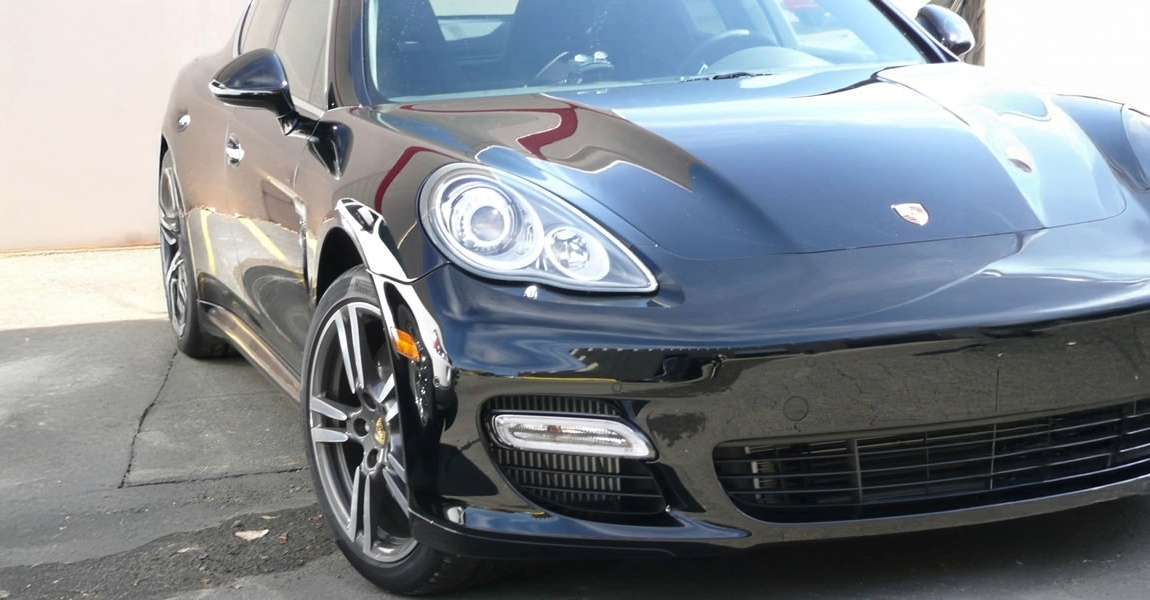
Comparing Self-Healing PPF With Traditional Vehicle Protection Methods
Thinking about how to protect your car? It's crucial to compare self-healing with traditional PPF protection methods. The new self-healing paint protection films (PPF) have revolutionized the way we think about protecting vehicles. Let's compare self-healing options to traditional methods, such as wax and regular car wraps.
Old methods, such as wax and basic wraps, did protect against scrapes and weather. However, they lack the cool features of self-healing PPF. This new type of PPF can repair itself from minor scratches and marks, a feature that older methods cannot achieve.
| Feature | Self-Healing PPF | Traditional Protection |
|---|---|---|
| Scratch Repair | Automatically repairs light scratches | Requires manual repair or remains damaged |
| Longevity | Up to 10 years with minimal maintenance | Needs regular reapplication, lasts 1-3 years |
| UV Protection | High | Low to Medium |
| Cost Over Time | Higher initial cost but less maintenance | Lower initial cost but higher maintenance |
This vehicle protection comparison reveals that self-healing technology offers excellent protection and saves money over time. Although self-healing PPF costs more initially, its benefits make it a worthwhile investment.
When selecting the best protection for your car, consider self-healing PPF and traditional methods. The table and details above illustrate how new vehicle protection methods can help keep your car looking new. They offer a more innovative way to save money and protect your car better.
Real-Life Applications of Self-Repairing Paint Protection
The durability of self-repairing paint protection extends beyond theory; it proves very useful in real-life applications. These protective films handle daily driving challenges, keeping cars safe from the typical damage caused by regular use.
These films are a boon for those who work in harsh environments. From stray gravel to wandering shopping carts, self-healing paint protection acts as a shield. It keeps the original paint looking fresh.
Everyday Wear and Tear
Your car meets many rough elements daily. Bird droppings, tree sap, and harsh UV rays can harm its outer layer. However, high-quality PPF repairs itself to protect against these hazards. This helps keep your car looking good.
Extreme Conditions and Durability Testing
PPF can withstand extreme weather conditions, ranging from extremely hot to extremely cold. Durability tests simulate these conditions to assess how well the film withstands wear and tear. People who've driven in tough places or bad weather have praised the film. They've noted it does well against scratches and marks.
Knowing how well self-healing films work in harsh conditions helps you pick the best protection. This ensures your car stays in great shape for a long time.
The Evolution of Self-Healing Technology in the Automotive Industry
The automotive self-healing evolution has changed how we protect our cars. The story of PPF (Paint Protection Film) is at the heart of this change. It was first used in the military to protect helicopter blades. Then, in the 1980s, it was adapted for cars, revolutionizing vehicle protection against daily harm.
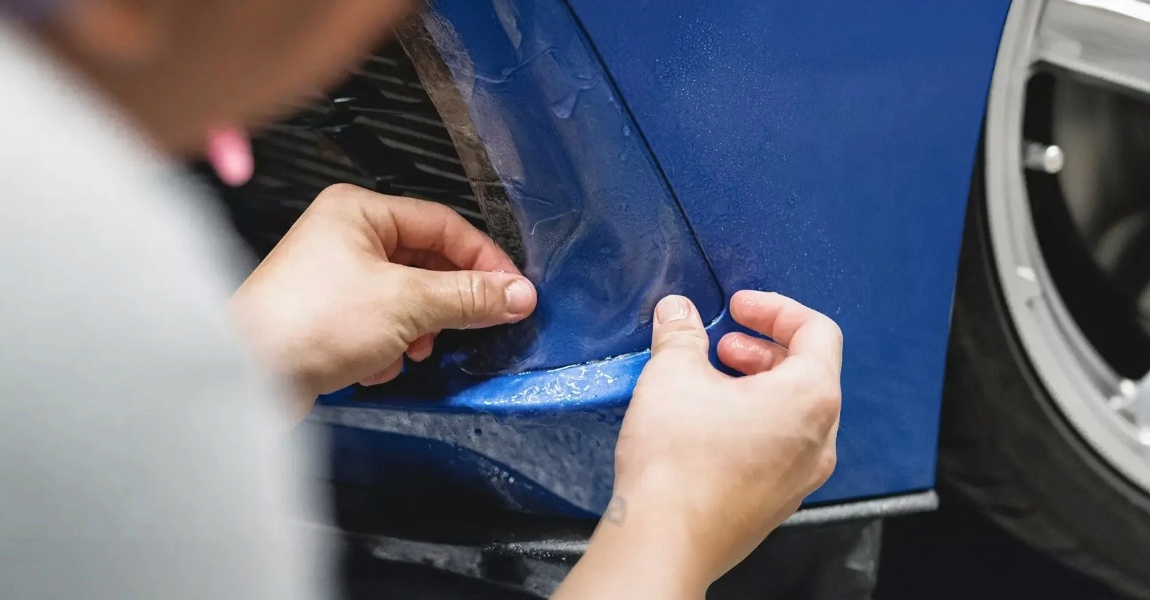
Thanks to new developments in polymer chemistry, self-healing PPF was created. Now, PPF can fix itself from light scratches and dings when it gets warm. This means your car's protection can last longer, keeping up with today's automotive needs.
The PPF has gotten even better with elastomeric topcoats. These coatings make it more resistant to stains and sun damage. The film stays clear and works well for a longer time. To know more about PPF's growth, check the evolution of PPF technologies.
As people seek better protection for their cars, the evolution of PPF is a key part of automotive history. It also shows us the future of car care. Self-healing tech is making it easier and cheaper to keep cars in top shape.
Choosing the Right Self-Healing PPF for Your Vehicle
When considering various methods for protecting your car's paint, selecting self-healing PPF that suits your car's specific needs is a wise choice. This isn't just about keeping the paint safe; it's about keeping your whole car looking great. It's essential to understand that not all protection films are the same, so obtaining the right advice is crucial for making an informed decision.
Think about where and how you use your car. Is it often out in bad weather, or is it mainly in the city with fewer risks? The type of protective film you need can vary based on these factors.
- Assess Your Vehicle's Daily Challenges: Consider daily factors such as sun exposure, extreme temperatures, and damage from items like road debris. These should help you choose.
- Long-Term Maintenance Goals: Consider how much maintenance you're willing to do. Self-healing PPF may be pricier upfront, but it can result in less maintenance over time because it can repair itself.
Even with all this in mind, getting help from experts is priceless. That's when Colorado Clear Bra's expertise is invaluable. They do more than install; they provide excellent advice on which product is best for your car.
For a professional PPF consultation, calling Colorado Clear Bra at 720-404-6324 is a good idea. They'll provide you with detailed advice and help you select the right self-healing PPF. This means your car receives the best protection tailored to its specific needs.
Self-Healing PPF: FAQs Answered
Are you thinking about getting a self-healing PPF for your car? You probably have some common PPF questions. We've gathered the most asked questions. Our goal is to provide you with a clear understanding of what these films do and their benefits.
| Question | Answer |
|---|---|
| What exactly is self-healing PPF? | It’s a special film that repairs minor scratches and marks on its own when warm. The heat can come from the sun or hot water. |
| How long does self-healing PPF last? | If you take good care of it, top-notch self-healing PPF can protect your car for over ten years from daily wear and tear. |
| Is self-healing PPF worth the investment? | Yes, it’s a smart move! It keeps your car looking new, saves money on repainting and scratch repairs, and helps boost its resale value. |
| Can self-healing PPF be removed or replaced? | Yes, if applied correctly, you can remove it or swap it out without damaging the paint. This makes keeping your car up to date easy. |
This info on self-healing PPF FAQs should help you see how useful this technology can be for your car—got more common PPF questions? Consult with a professional installer for personalized advice tailored to your vehicle.
Conclusion
In conclusion, we see self-healing PPF leading the way in advanced car protection. It gives unmatched resilience and lasts longer. This overview has shown you the benefits and workings of this tech. It's key for keeping your car looking great and well-protected against everyday wear and tear.
Keeping your car in top shape is crucial to its value. Self-healing PPF defends against damage from daily use. Looking back, the main takeaway on PPF is the peace of mind it offers. It's more than making your car look good—it helps keep it in excellent condition for longer.
As car care technology improves, self-healing PPF stands out as a blend of new and valuable. If you're thinking about how to care for your car next, self-healing PPF is worth considering. It has excellent self-repair abilities and top-notch protection against damage. Choosing it's not just smart; it's an excellent decision for discerning car owners.







